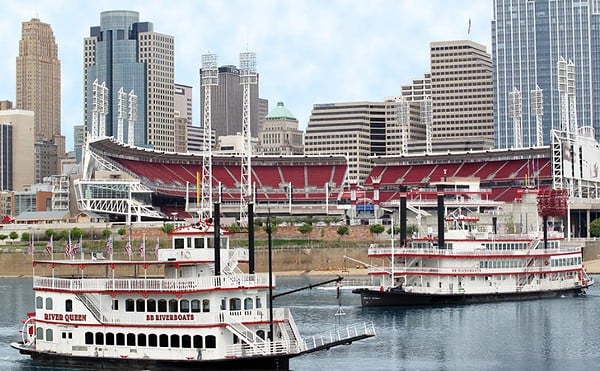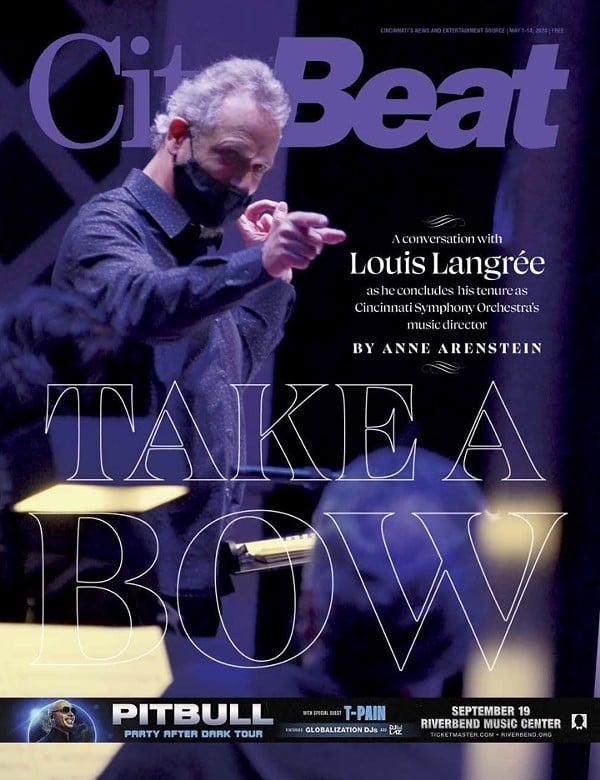|
The University of Cincinnati and the Clifton Heights Community Urban Redevelopment Corporation (CHCURC) increasingly dominate the changing landscapes of Calhoun and McMillan streets in the neighborhood immediately south of UC's main campus.
With the recent decision of Bill and Diana Wood, owners of Inn The Wood Restaurant and Tavern, to settle their eminent domain battle with the city of Cincinnati, one of the last pieces in the redevelopment plans for the area falls into place.
When the city of Cincinnati, calling their business blighted, initially offered $700,000 for the lot where their business is located, the Woods joined Clif-Cor Corporation, which owned the lots where Hardee's and Arby's were located, and the owners of Acropolis Chili in a class action lawsuit to fight the city's use of eminent domain to acquire their businesses. In a May interview, before reaching a settlement, Bill Wood blasted the city for intervening in the matter at all.
"My slant is this is totally illegal in how they're trying to take my property, so our situation is we're taking them (the city and CHCURC) to federal court," he said.
But with a showdown looming before U.S. District Judge S. Arthur Spiegel, the city recently increased its offer and the Woods decided to settle for $1.6 million, according to Diana Wood. Inn The Wood's last day of business was June 5.
"But if they'd come to us three years ago with a decent offer, we wouldn't have had to go through all this," Diana Wood says. "This whole process ... wasn't really necessary. But (CHCURC and UC) had to get the city into it because they had to have the properties blighted to get them."
Prior to the settlement, Bill Wood said the city lent legal muscle to CHCURC's effort to take their property.
"They basically hired the city of Cincinnati to be their henchman," he said.
City Councilman John Cranley, chair of the Finance Committee, didn't return calls for comment on this story.
The area around UC has been the focus for CHCURC's mission of attracting more upper-market housing and retail vendors than the neighborhood has traditionally seen in its working class history. According to the city's 2001 Clifton Heights/UC Joint Urban Renewal Plan, the 20-block area bounded by Vine, Ravine, Calhoun and Lyon streets has been slated to become a $110 million mixed-use project consisting of 78,510 square feet of retail space, 364 townhouse and condominium units and 1,159 parking spaces.
The plan calls for the Acropolis Chili lot to be converted to 4,600 square feet of retail space, 240 condominiums and two levels of underground parking. Inn The Wood's lot will become the 0.7-acre McMillan Park, with 18 townhouses and more underground parking.
Some UC students might decry the loss of familiar and affordable fast food choices. But the change was inevitable, according to Dan Deering, spokesman for CHCURC.
"Those types of restaurants are only designed to last 30 years or so," he says. "Also, bad urban planning in the late 1960s and early 1970s destroyed any pedestrian friendly capacity this area might've once had. But without a roadmap you can't get somewhere else, and these (plans) provide that."
Not all neighbors agree with how the changes are being implemented.
"What I don't like is that it's going to be so industrial-esque," says Louis Avromovich, a senior at UC's College-Conservatory of Music. "The old Clifton Heights was separate buildings that were unique, and that's what's going to be gone now."
Buzzy Gaz, owner of Uncle Woody's at the west end of Calhoun Street, thinks the plan is not well designed.
"The overall procedure has not been proper," he says. "The initial success of places like Rookwood Commons and Newport on the Levee was because they stair-stepped their development: They'd buy a lot, build on it and go on to the next one — not tear the whole street up at once like they're doing here."
Keeping the neighborhood atmosphere local is also a concern.
"We, as part of the Clifton Business Association, told CHCURC and UC there should be no more than 35 percent national chains and 65 percent regional and local businesses," Gaz says. "I'm a realist. If the stores and restaurants are too costly, this may or may not work, because Clifton's just not that kind of destination."
Andy Horning, a sales clerk at Lance's Campus Art Supplies on Calhoun Street and a resident of Clifton for the past seven years, didn't initially like what was being done.
"I thought the old Clifton Heights was being crushed," he says. Then he began to look at "the broader picture. Do you just let this neighborhood drive itself into the ground? At least they're putting some money into trying to do something for securing the future of this area."
While the Woods are satisfied with their settlement, they're not happy about leaving Clifton Heights.
"We were successful because you can come in here and get a decent meal for $4 or $5, we're right across from UC and we had what kids with a hangover wanted on Saturday and Sunday mornings," Diana Wood says. "The places they're going to put in are going to be overpriced. Where are those kids going to go?" ©





